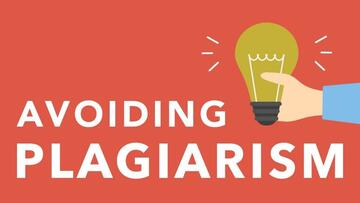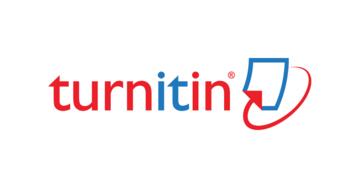The Students Guide to Avoiding Plagiarism
In this library guide we will discuss the ways to avoid plagiarism.

Plagiarism Is An Important Topic In Higher Learning.
What is Plagiarism?
Plagiarism can be defined as the following from the Merriam Webster Dictionary,
Used as a Noun
- The practice of taking someones' work or ideas and passing them off as one's own.
From this definition we can gather the following ideas:
- Plagiarism Is an Action
- Plagiarism Is Taking Someone's Work and Changing It A Little Bit Without Giving Credit To That Person
- Plagiarism Can Be Word for Word Stealing As Well
- Plagiarism Is Unethical and Goes Against Academic Integrity
- Plagiarism Is Stealing
- Plagiarism Is Wrong
Different Types of Plagiarism
There are multiple types of plagiarism in the academic world. Listed below you will find four of the most common types of plagiarism.
Direct Plagiarism
Direct Plagiarism can be defined as the following, copying another writer's work with no attempt to acknowledge that the material was found in an external source is considered direct plagiarism.
- Word for Word With No Citation
- Worse Type of Plagiarism
- Can Be Corrected With a Simple In-Text Citation
Self Plagiarism
Self-plagiarism occurs when a student submits his or her own previous work, or mixes parts of previous works, without permission from all professors involved.
- Taking a Part of a Paper Used In Comp I for a Paper in Comp II Without Consulting Your Professors
- Using the Same Paper For A Different Course
- This Is a Form of Plagiarism That Often Gets Forgotten
Mosaic Plagiarism
Mosaic Plagiarism occurs when a student borrows phrases from a source without using quotation marks, or finds synonyms for the author’s language while keeping to the same general structure and meaning of the original. Sometimes called “patch writing."
- Similar to Direct Plagiarism But You Take Out Certain Words Or Change the Structure of the Sentence
- Doesn't Use Quotation Marks
- Can Be Accidental and On Purpose
- Can Be Corrected With a Simple In-Text Citation
Accidental Plagiarism
Accidental plagiarism occurs when a person neglects to cite their sources, or misquotes their sources, or unintentionally paraphrases a source by using similar words, groups of words, and/or sentence structure without attribution.
- Accident By Student
- Forgot to Cite Sources
- Can Be Forgiven If It's First Time Caught Plagiarizing
- Can Be Corrected With a Simple In-Text Citation
Why Plagiarism Is A Big Deal
Plagiarism is a big deal for a few reasons which shall be listed below.
Academic Dishonesty at Donnelly College
At Donnelly College we expect the best out of our students. As per the Academic Catalog of 2020 - 2021 it states the following on page 19:
Academic dishonesty is any form of academic impropriety committed by a student and involving a dishonest motive or intent.
11. Plagiarism, which shall mean the appropriation of another person’s work, with or without that person’s consent, and the unacknowledged incorporation of that work into one’s own work.
Adding Something New to the Academic World
If plagiarism was allowed to occur, the academic world would be a dull place. Imagine a world where nothing new was ever created! Creating papers adds something new to the academic landscape that may not have been discussed before.
Giving Credit Where Credit is Due
This is one of the most important aspects as to why plagiarism should be taken seriously. It ensures that the original creators of a work get credit for the work they created. You wouldn't want to create something and have someone steal it from you and call it theirs! You would want that acknowledgment that you were the original creator of the work. It is a high honor to have your work cited by othes since it adds value to the academic world.
TurnitIn Tool At Donnelly
Donnelly College has a subscription to the tool known as, TurnitIn. This tool is integrated into Canvas and will check any written student submission for plagiarism. The professor and the student will be able to get a report on how much was plagiarized in percentages and where from. This allows for students to check their work and correct any potential issues at hand.

How To Avoid Plagiarism
Avoiding plagiarism is fairly simple. Listed below you will find steps to avoid plagiarism.
- Give credit to the original author/creator by offering an in-text citation when writing a paper.
- After the in-text citation is written include the citation in your reference page or works cited page.
- Schedule a meeting with a tutor by emailing, tutoring@donnelly.edu
- Ask the librarian for assistance by emailing, tjohnson@donnelly.edu
That is all there is too it. Simple give a citation with each item you quote directly or paraphrase from an article or website.
Reference
Bowdoin College. (n.d.). The common types of plagiarism. https://www.bowdoin.edu/dean-of-students/judicial-board/academic-honesty-and-plagiarism/common-types-of-plagiarism.html.

